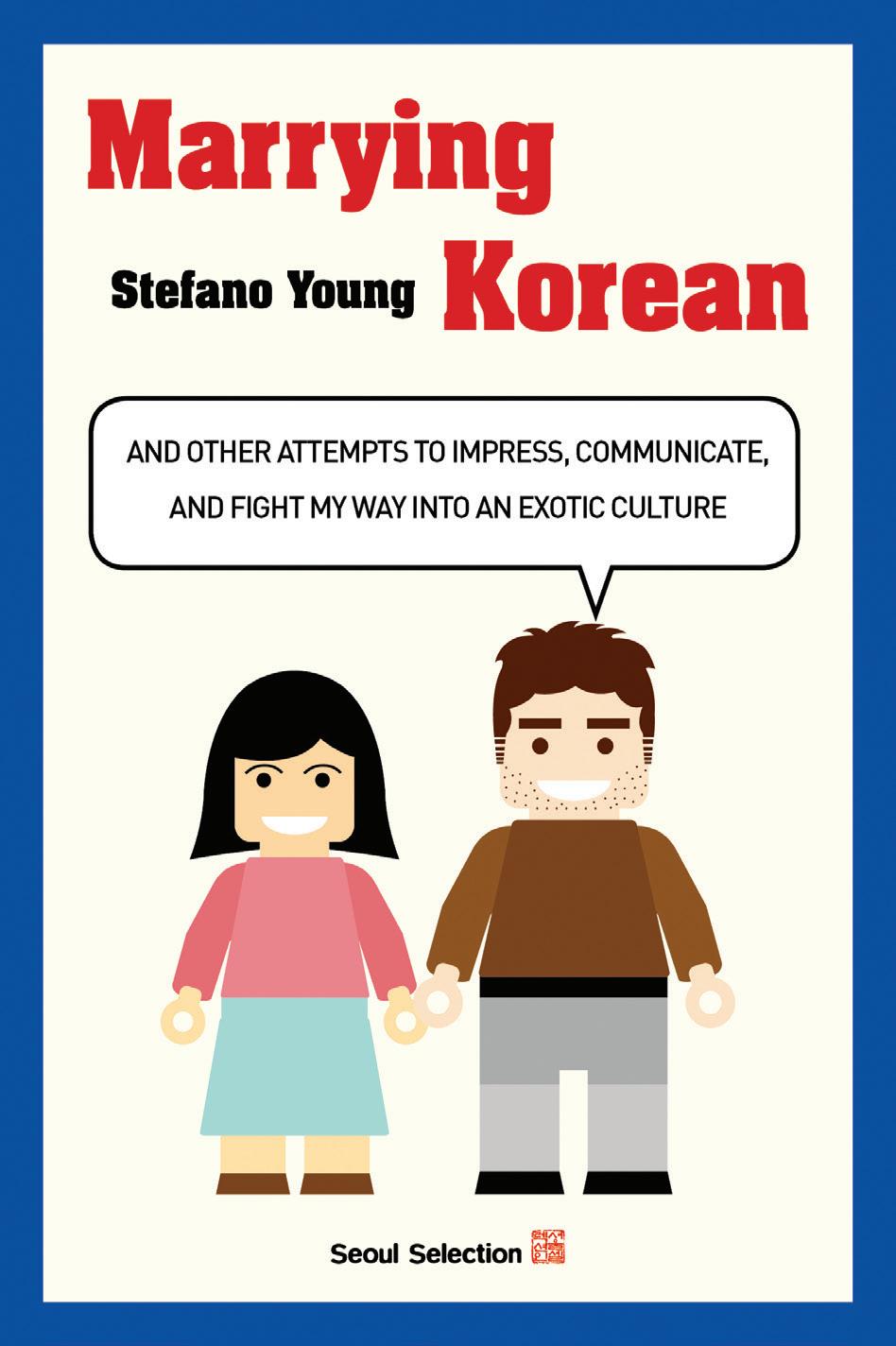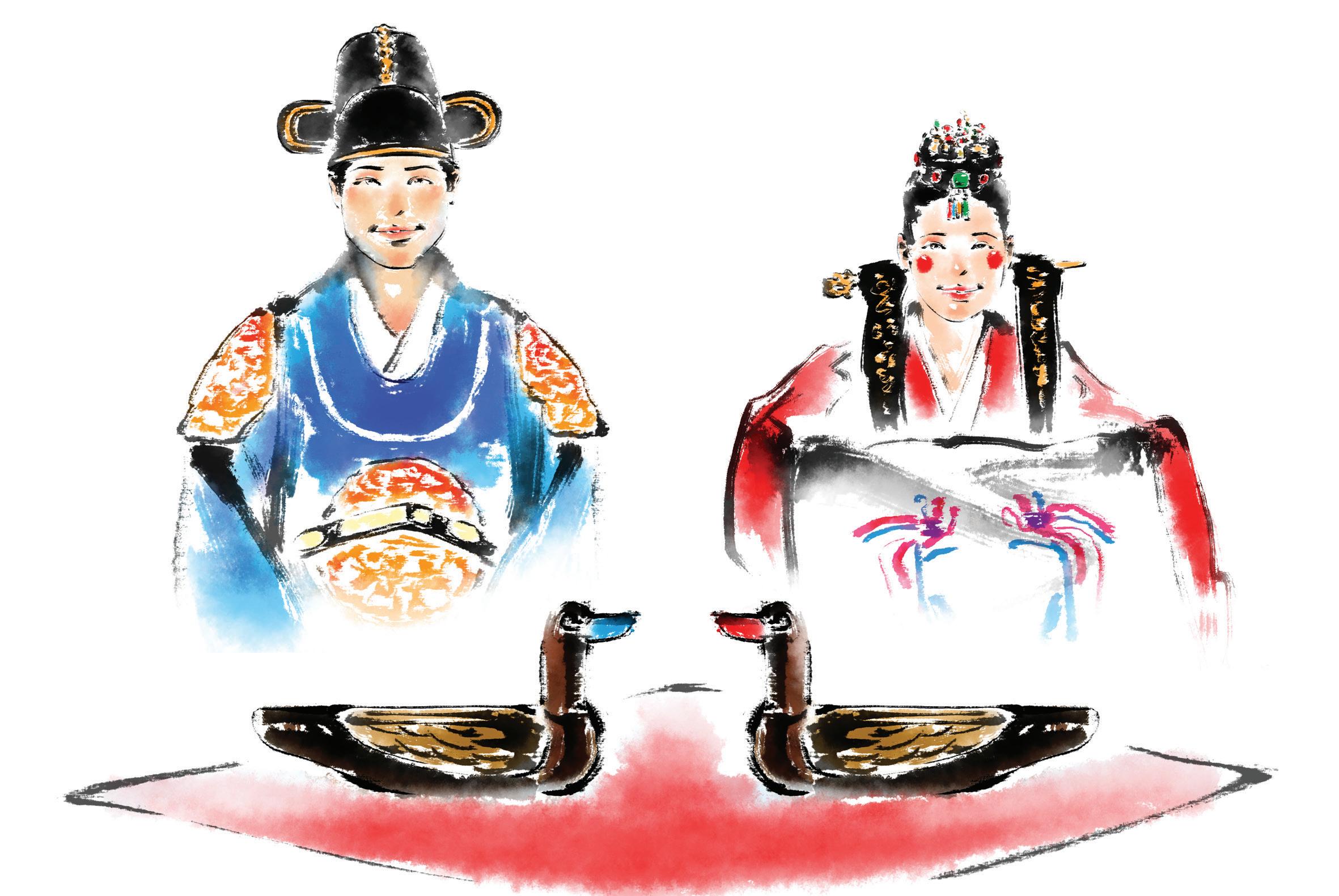
7 minute read
Book Review: Marrying Korean
Marrying Korean
Reviewed by Rhiannon Howell-Matwichuk
Advertisement
Stefano Young’s first foray into writing comes to us as Marrying Korean, a short-form memoir about the author’s journey of enmeshing himself into a new culture for his future wife. It is a tale as old as time: Boy meets girl and then chaos ensues. The chaos of Young’s variety is a particular brand – the kind that happens when a white person marries into a traditional Asian household. Cultural norms are challenged, genderroles are upheld, and the couple is plagued by questions of how their compatibility is affected by their distinctive backgrounds.
Young’s purpose in writing this book seems to be a simple one: Allow the reader to act as a voyeur while he recounts snapshots of his relationship. Spanning from the first trip Young and his then-girlfriend Garam made to Korea together to their eventual marriage and creation of a family, Young organizes the book to read as small, altogether charming glimpses into a newcomer’s experience of Korea. As the book progresses, the order of events jumps around quite generously, but in the end, returns to its starting point. In general, he accurately identifies the thought process that occurs when a person first encounters Korea from a non-tourist lens. The new tastes, smells, and ways of life he is subject to help teach the reader about aspects of Korean culture they may not have been aware of previously.
For those who are hoping for some light and fluffy tales about Korea, this book does not disappoint. For example, a chapter is dedicated to the author’s experience visiting a Korean bathhouse, or jjimjil-bang(찜질방), with his fatherin-law and the distinct feeling of (literal) naked outsiderness that comes along with that. In another chapter, he recounts an anecdote about his first stay at a love motel, offering any expat reader a sympathetic chuckle in response to his shock at certain provided amenities in such establishments. At times, such moments read as a Pinterest list of “Must-Do Things While in Korea,” but his experiences are wholly accurate in their narration of the easily recognizable differences one would find on a foray to the Land of the Morning Calm.
In other sections, however, Young explores the delicate and very personal intricacies of navigating a new culture from a very unfamiliar place to most foreigners in Korea: a serious romantic relationship. In one moment, Young shares the details of a fight with Garam over a “near miss” while test-driving a new car. Being an inexperienced driver, Garam expected Young to take the wheel when she asked. As she was to be the primary driver of the car, Young assumed, without prior knowledge of her driving abilities, that she should be the one to test the vehicle. The resulting conflict that followed the almost-accident takes what was seemingly a minor scare and turns it into a microcosm for bigger problems in the relationship. At one juncture in the fight, Garam laments that “a Korean
guy would’ve [done what I asked].” This sentiment poses questions of masculinity, gender roles, and cultural expectations that highlight the less-amusing struggles of an intercultural relationship.
These sections of the book were the ones that I found at once the most compelling, yet deeply frustrating to read. Young brushes the surface of these complicated issues but fails to truly dive deeper into them. He gives the reader a taste but then seemingly falls short of ever giving a truly vulnerable summation of his feelings at that time, choosing instead to lean on a simpler, droller narration.
The author’s tone often relies on humor without bite; merely stating things as they happened and how they were funny in the moment without any further personal reflection. At times, the lack of personality in Young’s writing left me feeling disinterested in the subject matter.
Overall, Young’s Marrying Korean accomplishes what it seemingly sets out to do. It provides a humorous look at his particular life experience. I would recommend this book to any newcomer to Korea. To paint the expat community with a broad brush, most who find themselves here are not here for the long haul; they find themselves at a transitory period in life, looking for some adventure. What makes Young’s perspective compelling is that he finds himself on the opposite side of this spectrum: He is considering making this life as a foreigner a permanent one. He encounters a different set of challenges that make his voice unique yet familiar, bridging the gap between presenting a new viewpoint and speaking to the universal expat experience of being an outsider.
The ebook is available on the following platforms: Amazon, Apple Books, Google Books, Barnes&Noble, Kobo, Scribd. 교보문고, 리디북스, 북큐브, YES24, 알라딘, 반디앤루니스, 인터파크 도서.
Young’s website: http://stefanoy.com/writing/books/
The Reviewer Rhiannon Howell-Matwichuk is an avid reader and lover of all things journalism. Her passion for new experiences lead her to Korea, where she currently resides in Gwangju working as an English teacher.

Grit The Power of Passion and Perseverance

Reviewed by Kristy Dolson
Finish a book every week.” This is the sole concrete goal I set for myself in 2020. And so far, January and February have provided the ideal conditions to achieve it. A relative lull in workload, coupled with COVID-19 delays, has produced the opportunity and incentive to burrow into my blanket fort and blaze through my to-read list. But when the new semester commenced in March, I faced tough decisions. Should I allocate extra effort toward work projects, hang out with friends, or achieve my daily page counts? As my free time slowed to a trickle, I started to doubt if this self-imposed goal was worth it. In other words, I began questioning my grit.
Luckily, I recently read Angela Duckworth’s amazing non-fiction book on this very subject. Grit: The Power of Passion and Perseverance compiles Duckworth’s years of research in the service of defining and explaining how readers can harness grit to increase their happiness and success. Early in the book, Duckworth invites readers to take two survey tests to determine their grit score as well as their passion and perseverance rankings. The book then goes on to explore how readers can grow their grit from the inside out, and how parents, teachers, and coaches can help their charges cultivate grit from the outside in.
I took the test and scored rather highly, with my passion score outranking my perseverance. When I look back on my life journey, this makes a lot of sense. True, I have a lot of passions, but I’m not incredibly focused on a singular goal. I want to be a great baker, singer, friend, actor, writer, and teacher! Duckworth calls these passions our inner compasses but claims that we all need to choose one compass to guide our decisions and actions in life. Two competing compasses will cause internal conflict and distract us from reaching our upper-level goals. My experience seems to align with her claim. So, now I need to pick a top-level goal and narrow my focus.
Duckworth’s thesis statement is that people who hold the same top-level goal for a very long time have a lot of grit. A top-level goal is one that harmonizes with a person’s life philosophy and serves as the pinnacle of the achievement of many low- and mid-level goals. For example, my life philosophy is to “Serve others,” and if my top-level goal is to “Be a good teacher,” then my mid-level goals might be things like “Attend KOTESOL,” “Read educational literature,” and “Start a teaching blog,” whereas low-level goals involve small-scale, daily habits, such as “Be on time,” “Reflect on class,” and “Engage with peers” that each serve as small steps toward those upperlevel goals. So, where does my reading goal fit into all of this? Well, by reading more books, I’ll be building my physical library and my knowledge base.
One of my favorite things to do is connect people with books I think they’ll love. By reading more books, I have a bigger and more diverse pool of recommendations to choose from. I also write reviews for the Gwangju News. Not only does that serve those who work for the magazine, but it also – hopefully – serves the readership. And by selecting interesting books, I’m continuously advancing my knowledge base, which I can then share with others in personal and professional contexts. Therefore, if my life philosophy is to “Serve others,” then reading more books this year provides robust long-term benefits in terms of my upper-level goals – even if I’ve yet to fully define those goals.
In addition to helping me identify my personal goals, I found this book extremely useful as a teacher and mentor – especially with respect to using praise to foster grit. Recently, I’ve taken a keen interest in motivation and growth mindsets among learners, and this book provided me with some thought-provoking studies and stories to chew over as the new school year approaches. I highly recommend this fascinating read for everyone seeking a more meaningful and satisfying life, but especially to those who teach, coach, mentor, or parent.
The Reviewer
Kristy Dolson lived in South Korea for five years before taking a year off to travel, read, and spend time with her family in Canada and Australia. She holds a Bachelor of Education and now lives in Yeosu.










